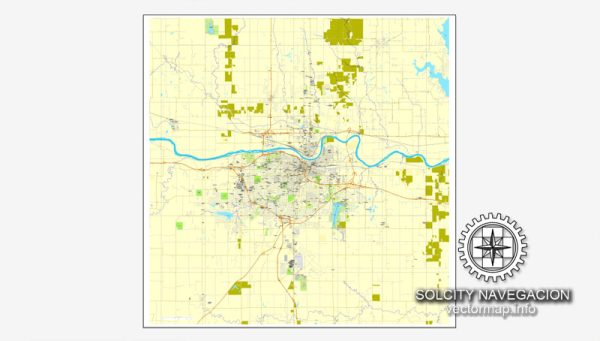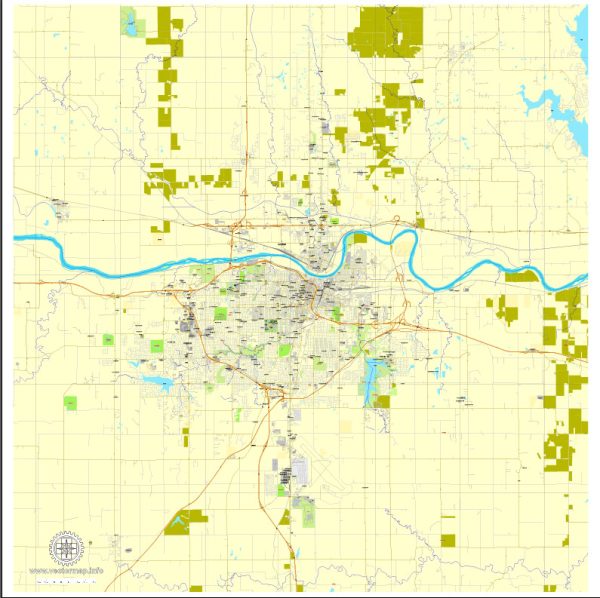Topeka, the capital city of Kansas, has a rich history of urban development that reflects the broader trends and challenges faced by many American cities. The story of Topeka’s urban development can be traced through various periods, including its early settlement, growth as a transportation hub, industrialization, suburbanization, and efforts at revitalization.
- Early Settlement (1850s-1860s): Topeka was founded in the 1850s as a Free-State stronghold during the tumultuous period leading up to the Civil War. Its strategic location on the Kansas River made it an important transportation and trading center. The city’s gridiron street pattern reflects its early planning.
- Railroad Expansion (Late 19th Century): The late 19th century saw Topeka’s growth as a railroad hub, with multiple rail lines converging in the city. This led to economic expansion and increased connectivity with other parts of the country, facilitating the movement of people and goods.
- Industrialization (Late 19th Century – Early 20th Century): Topeka’s industrial base expanded in the late 19th and early 20th centuries. Industries such as meatpacking, manufacturing, and agriculture-related enterprises contributed to the city’s economic development. This period also witnessed the growth of neighborhoods and housing to accommodate the increasing population.
- Suburbanization (Mid-20th Century): Like many American cities, Topeka experienced suburbanization in the mid-20th century. The post-World War II period saw a trend of people moving away from the city center to the suburbs, facilitated by the availability of automobiles and improved infrastructure. This had implications for the city’s urban fabric and led to the development of suburban neighborhoods.
- Civil Rights Era and Urban Challenges (1960s-1970s): Topeka, like the rest of the United States, experienced social and economic challenges during the Civil Rights era. Issues such as segregation and economic disparities impacted the urban landscape. The landmark Supreme Court case Brown v. Board of Education, which originated in Topeka, played a crucial role in the desegregation of American schools.
- Urban Renewal and Revitalization (Late 20th Century – 21st Century): In response to the challenges of urban decline, Topeka, like many cities, engaged in urban renewal efforts in the mid-20th century. The latter part of the 20th century and the early 21st century saw attempts at revitalization, including downtown redevelopment projects and the preservation of historic structures.
- Economic Diversification (Late 20th Century – Present): Topeka has worked to diversify its economy beyond traditional industries. Efforts have been made to attract technology, healthcare, and education-related businesses. The city’s economic landscape continues to evolve, impacting its urban development patterns.
Topeka’s urban development is a dynamic narrative shaped by historical events, economic shifts, and social changes. Today, the city continues to face challenges and opportunities as it navigates the complexities of urban living and strives for sustainable growth.



 Author: Kirill Shrayber, Ph.D.
Author: Kirill Shrayber, Ph.D.